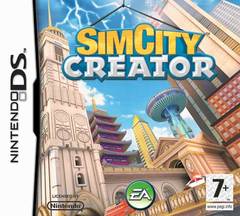simulation
Harvest Moon: Grand Bazaar
 Like many, I was first introduced
to the concept of farming simulation via an obscure Facebook title called
Farmville. Not sure if that game flopped or not, but I didn't stick
around too long to find out as the idea of caring for crops day in,
day out did little to excite me. Sure, I like managing and being organized
and earning faux money, but in the end, there wasn't really much to
do with Farmville other than pester friends with countless requests
and click on the same things over and over. After some time passed,
I got the hankering again to water some crops and decided to give
Rune Factory: A Fantasy Harvest Moon a try; unfortunately, despite
being a farming simulator with bonus RPG dungeon-crawling elements,
I still wasn't entertained.
Like many, I was first introduced
to the concept of farming simulation via an obscure Facebook title called
Farmville. Not sure if that game flopped or not, but I didn't stick
around too long to find out as the idea of caring for crops day in,
day out did little to excite me. Sure, I like managing and being organized
and earning faux money, but in the end, there wasn't really much to
do with Farmville other than pester friends with countless requests
and click on the same things over and over. After some time passed,
I got the hankering again to water some crops and decided to give
Rune Factory: A Fantasy Harvest Moon a try; unfortunately, despite
being a farming simulator with bonus RPG dungeon-crawling elements,
I still wasn't entertained.
Scanning the shelves of my local GameStop recently, I noticed a bunch of other Harvest Moon games on the DS. Like, a ton. There were at least three sitting eye-level, staring me in the face, begging to be watered. And I got that itch again. I decided to give the most newest title a chance. Let's see if Harvest Moon: Grand Bazaar is different enough to grow into something fun, something edible.
Steel Diver
 Any time a creator of game technology sets a new standard, they want to
show it off in a way that gets potential customers dreaming about what
games they might be playing with it. The Final Fantasy VII tech demo for
PS3 was meant to show off the graphical leap that Sony's
Spiderman-fonted grill console could muster...and, of course, hype fans
up for a remake that would never exist. Peter Molyneux's Milo was a
proof of concept that Kinect could, theoretically, be an interaction
simulator. With the game's cancellation, it looks like that will stay a
theory for the time being. And who could forget Epic's "meat cube" demo
for Unreal Engine 3, newly improved for Gears of War 2? And yet, here we
are in 2011 with no cubes of messy meat to play with whatsoever.
Any time a creator of game technology sets a new standard, they want to
show it off in a way that gets potential customers dreaming about what
games they might be playing with it. The Final Fantasy VII tech demo for
PS3 was meant to show off the graphical leap that Sony's
Spiderman-fonted grill console could muster...and, of course, hype fans
up for a remake that would never exist. Peter Molyneux's Milo was a
proof of concept that Kinect could, theoretically, be an interaction
simulator. With the game's cancellation, it looks like that will stay a
theory for the time being. And who could forget Epic's "meat cube" demo
for Unreal Engine 3, newly improved for Gears of War 2? And yet, here we
are in 2011 with no cubes of messy meat to play with whatsoever.
Sometimes, what starts as a tech demo eventually becomes a retail product. Such is the case with Steel Diver, possibly the only submarine video game I know of. What is now a 3DS launch title was originally meant to show off the brand new use of the touch screen as a controller...six years ago, for the original Nintendo DS. It seems Nintendo decided to take that aged tech demo, update its visuals for the new hardware, and profit.
So here we are at the 3DS launch, with three first party retail titles from Nintendo. One appears to merely be a graphical update to the Nintendo DS' second best-selling game. Another seems to be made entirely of assets from Nintendo's ridiculously successful Wii Sports series. Could Steel Diver, a tech demo that was forgotten a generation ago, prove to be a niche hit lurking in the depths, or will it continue to torpedo into obscurity?
Harvest Moon: Magical Melody
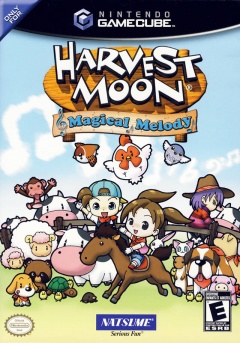 Harvest Moon has been one of my favorite video games series, but with
as many Harvest Moon titles that have been released, there are bound to
be a few that just don't click with me. This has been happening more
often than I would like of late with my favorite farming simulator, and I
blame that on essentially the two different series Harvest Moon has
become. Ignoring all the spinoffs such as Rune Factory, Frantic Farming,
and Innocent Life, the series essentially split at the Back To
Nature/Friends of Mineral Town point about ten years ago.
Harvest Moon has been one of my favorite video games series, but with
as many Harvest Moon titles that have been released, there are bound to
be a few that just don't click with me. This has been happening more
often than I would like of late with my favorite farming simulator, and I
blame that on essentially the two different series Harvest Moon has
become. Ignoring all the spinoffs such as Rune Factory, Frantic Farming,
and Innocent Life, the series essentially split at the Back To
Nature/Friends of Mineral Town point about ten years ago.
Back to Nature for the PS1 was the first non-Nintendo Harvest Moon game and expanded on the previous console release, Harvest Moon 64. An enhanced remake/port was released for the GBA titled Friends of Mineral Town which I consider to be the quintessential Harvest Moon title. But at this point, the PS2 and GameCube were out, and the developers started going down the road of fancier 3D graphics on the conoles while basically every portable iteration has been based on the Friends of Mineral Town structure.
So what I call the portable Harvest Moon series is built on a very solid set of gameplay elements: farming, foraging, mining, and relationships. All aspects of the game are well-tuned and are balanced decently. On the consoles, it's a completely different story: we get a mish-mash of unbalanced, poorly tuned gameplay elements planted in a boring looking 3D world. The console "series" has suffered like this since Save the Homeland on the PS2, but I mostly blame A Wonderful Life, the first Harvest Moon game I ever played that I really, truly hated.
Magical Melody, of course, falls into the console series. Released on the GameCube in 2006 and then re-released on the Wii in 2008, Magical Melody continues the sorry Harvest Moon console tradition of not being very much fun. Whoops, did I spoil the first hour for you?
I've actually been sitting on this first hour review for an entire year, I had it completely written except for this introduction. I'm not really sure what I was waiting for; I think through a combination of Magical Melody being an older, quite unexciting game combined with the fact that it's a sorry game from one of my favorite series made me hold off. But I really need to get it off my to-do list, so here you go, the first hour of Harvest Moon: Magical Melody for the GameCube.
I Didn't Beat This Game: Rune Factory 2
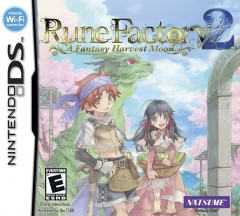 I began playing Rune Factory 2 almost 14 months ago, I enjoyed the original Rune Factory but thought there were quite a few flaws that needed to be dealt with. With the inevitable Harvest Moon sequel, I knew that I would have a chance to play their next iterations of the "fantasy Harvest Moon" series.
I began playing Rune Factory 2 almost 14 months ago, I enjoyed the original Rune Factory but thought there were quite a few flaws that needed to be dealt with. With the inevitable Harvest Moon sequel, I knew that I would have a chance to play their next iterations of the "fantasy Harvest Moon" series.
Rune Factory 2 was released in late 2008 but I didn't bother picking it up until a year later, the Nintendo DS is probably my most played platform so there are a lot of games to get to. I played pretty hardcore for a month, which ultimately, probably is what did me in. I was making cash hand over fist and it wasn't even the end of the first Spring; my farming was so profitable but time-consuming that I burned myself out.
I picked up the game again a few months later and managed pretty successfully to continue where I left off: making lots of money and not actually having a lot of fun. I hate to blame myself for this though as the game readily enabled me every step of the way, but my extensive Harvest Moon knowledge and wealth of strategies certainly didn't help either.
My notes on the game have been languishing for months though, so I'd like to get my thoughts on the game out there in the wild. I'm horribly late to the party as Rune Factory 3 was released in November, but to not comment on a game I played for tens of hours seems like a travesty when I write a thousand words on games I beat in eight hours. So please note that this is not a review, but merely an observation of my experiences, there will be no score awarded for obvious reasons.
Dwarf Fortress
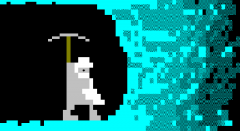 A few months ago I was emailed from a reader requesting I give Dwarf Fortress a try. He described it as “pretty complicated” but asked that I follow a series of tutorials written by a devoted fan. I gave the game a look, skimmed over the tutorials, and shelved the idea of playing it. Dwarf Fortress seemed a bit overwhelming and having been on a bit of a NetHack kick last year I was feeling a burned out with ASCII gaming.
A few months ago I was emailed from a reader requesting I give Dwarf Fortress a try. He described it as “pretty complicated” but asked that I follow a series of tutorials written by a devoted fan. I gave the game a look, skimmed over the tutorials, and shelved the idea of playing it. Dwarf Fortress seemed a bit overwhelming and having been on a bit of a NetHack kick last year I was feeling a burned out with ASCII gaming.
I decided it was finally time to give it a chance though, so here’s my first hour playing Dwarf Fortress. The game is currently in development (and has been for the better part of the last decade), but since the tutorials I’ll be following are for a specific build from back in 2008, that’s what I’ll be playing. So keep in mind that while I have never played Dwarf Fortress before, I will be following the walkthrough site pretty closely (and using the included saved game, though nothing has been built out).
This seems like a great time to visit Dwarf Fortress, with the success of another indie darling, Minecraft, generating huge waves and sales; super-deep sandbox games are big right now. So let’s get this started and dig into Dwarf Fortress on the PC.
Game Dev Story
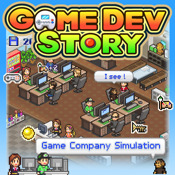 I’ve played a few iOS games this year, mostly just picked stuff up from word of mouth or something a friend developed. I started hearing about this little simulation title called Game Dev Story, and after reading up on the premise and reading about some crazy sounding experiences on Twitter, I had to check it out.
I’ve played a few iOS games this year, mostly just picked stuff up from word of mouth or something a friend developed. I started hearing about this little simulation title called Game Dev Story, and after reading up on the premise and reading about some crazy sounding experiences on Twitter, I had to check it out.
In a way, it’s basically in the genre of games my wife loves on her iPod Touch: the simple yet addictive management simulator. She loves Sally’s Spa and Diner Dash (and I’ll admit, I tried them both out and while I could easily recognize why someone would like them, they quickly became stale), and on the surface, Game Dev Story isn’t much different.
But it is different, and that’s why I’m bothering to write about it. Warning: Game Dev Story is extremely addictive, deep, and funny. Read on for my review.
SimCity DS
 Besides Super Mario World,
SimCity was one of the first games I got for my Super Nintendo Entertainment
System way back when. Countless hours were spent creating the most glorious
cities…and then throwing total havoc their way. It was one of the
first simulation games I’d ever played, and watching the seasons change,
residential zones flourish, and roads fill up with traffic was extremely
satisfying. Alas, I traded in my SimCity cartridge for something else
(hopefully not Shaq-Fu) because I was young and stupid once. Now I’m
just less stupid. Moving forward, I dabbled in later PC versions of
SimCity, but never found any of them to be what I used to love. Maybe
SimCity DS will be the one to warm the cockles of my heart?
Besides Super Mario World,
SimCity was one of the first games I got for my Super Nintendo Entertainment
System way back when. Countless hours were spent creating the most glorious
cities…and then throwing total havoc their way. It was one of the
first simulation games I’d ever played, and watching the seasons change,
residential zones flourish, and roads fill up with traffic was extremely
satisfying. Alas, I traded in my SimCity cartridge for something else
(hopefully not Shaq-Fu) because I was young and stupid once. Now I’m
just less stupid. Moving forward, I dabbled in later PC versions of
SimCity, but never found any of them to be what I used to love. Maybe
SimCity DS will be the one to warm the cockles of my heart?
Greg reviewed the DS sequel, SimCity Creator last year.
Gratuitous Space Battles
We finish off our second annual indie games month with Gratuitous Space Battles, an epic space battle simulator from Positech Games. During our first independent games month last year, we featured Kudos 2, a life simulator also created by the one man team of Cliff Harris at Positech Games. This guy likes his simulators, whether they're of space, life, or Democracy, but Gratuitous Space Battles is a seriously awesome game.
Gratuitous Space Battles is the first game I ever played of its kind. It's almost like one giant, single turn of a board game, or Civilization. Your opponent's pieces are in place and visible on the board, and it is your job to create and deploy a fleet of ships that can combat and destroy them, hopefully while taking minimal losses yourself. Once you click Fight, there's nothing else you can do. It feels very... unnatural at first, like the developer is taking away control of the most enjoyable part of the game. There are explosions and debris everywhere, and you want to be part of the action. But then you begin to realize that the actual simulation isn't the game, but everything before it.
It's fairly obvious that Gratuitous Space Battles is not a game for everyone. There's no real-time micro-management, no hotkeys to quick select a group of ships, and especially no mouse button spamming to get your point across. Gratuitous Space Battles is one of the finest, genre-defining games I've ever played. The game is simply in its own category. I honestly can't give the game a final score because I don't know what to compare it against.
Gratuitous Space Battles was developed for Windows but also works great in Wine on Linux, which is how I played it.
SimCity Creator
SimCity Creator is a city-building game for the Nintendo DS. The game is known as SimCity DS 2 in Japan, but EA decided to rebrand it as SimCity Creator to align it with the Wii game of the same name that was also released in September 2008 (supposedly, the first SimCity DS, so they were also trying to break out of that stigma). So please, take note that this review is of the DS game and not the Wii game, while both SimCity games, they seem different enough to definitely qualify as unique games.
I've always been a fan of SimCity, remembering back to the days of DOS where if you bulldozed a church God sent your way a tornado as thanks; and sleeping over at my friend Joey's house just so I could play SimCity 2000 all night (plus he had a pretty awesome Lego collection). SimCity and I have a long history, heck, I even played SimCity 64 for the 64DD in Akihabara, Japan. However, I skipped SimCity DS because I honestly didn't think the stylus was accurate enough to play a tile-based game where precision mattered. If the controls for SimCity DS are anything like Creator's, I'll be both right and wrong, which I'll describe below.
SimCity Creator is a unique game, blending some fun scenarios with original building architecture, but let's see if it's actually worth playing.
Trauma Center: Under the Knife 2
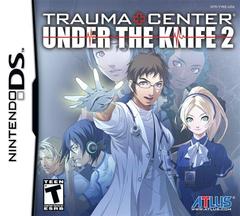 Trauma Center: Under the Knife 2 is the direct sequel to one of my favorite Nintendo DS games Before I played the original Trauma Center, I had never understood the real appeal of the DS. That game, along with Kirby Canvas Curse, demonstrated what the system was really capable of and how much fun it could be. So when the sequel was released, I put it at the top of my list to play. I actually beat this game about two months ago, but things have been pretty busy so I haven't been able to write the review until now.
Trauma Center: Under the Knife 2 is the direct sequel to one of my favorite Nintendo DS games Before I played the original Trauma Center, I had never understood the real appeal of the DS. That game, along with Kirby Canvas Curse, demonstrated what the system was really capable of and how much fun it could be. So when the sequel was released, I put it at the top of my list to play. I actually beat this game about two months ago, but things have been pretty busy so I haven't been able to write the review until now.
The Trauma Center series pits you as a highly skilled surgeon working for Caduceus, a well funded research facility. The games are highly linear, with tons of text, so if you're looking for a straight surgery simulator, you'll have to wade through a lot of cruft to get to it. If you can put up with much too serious characters in contrived situations, then you will be rewarded with excellent and difficult gameplay. Let's get to my review of Trauma Center 2.


